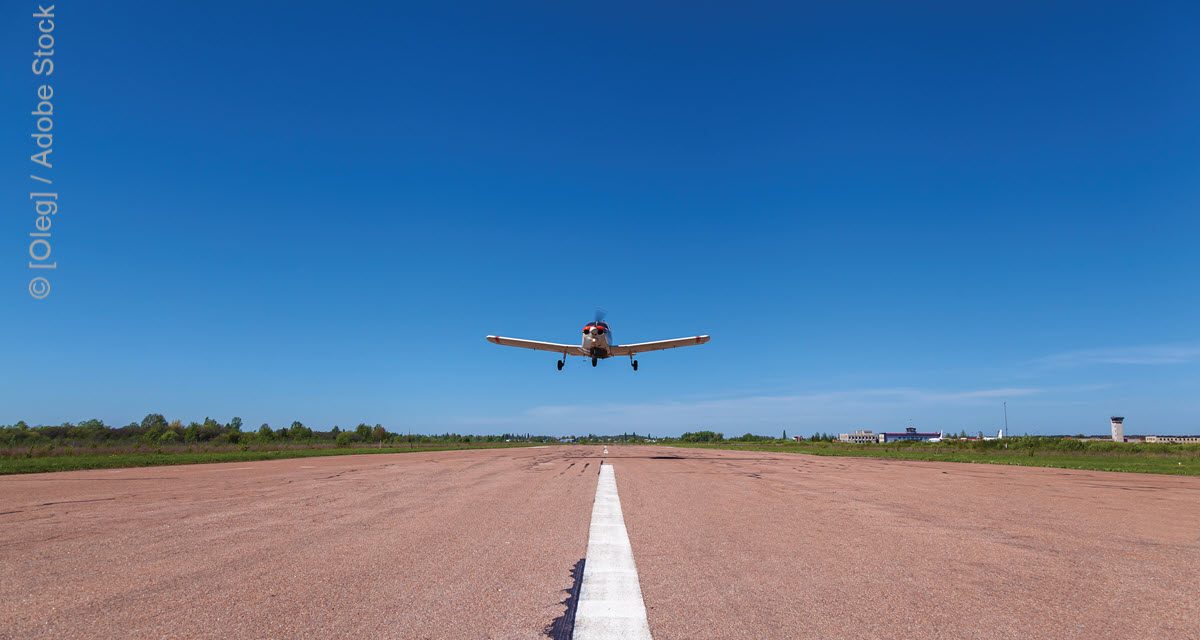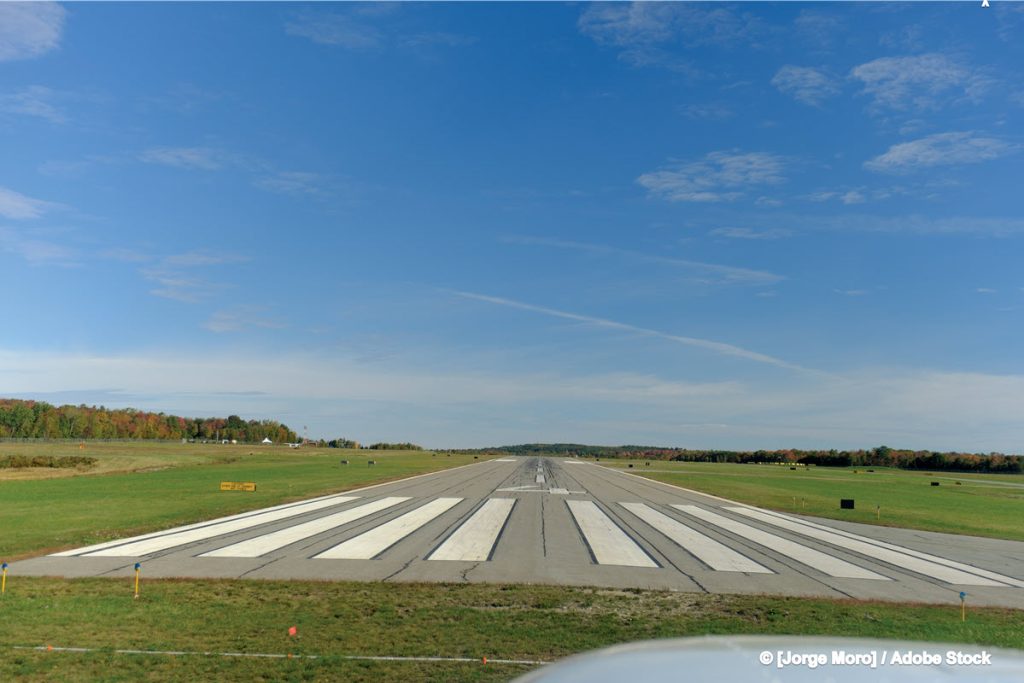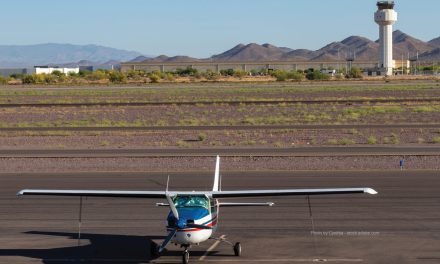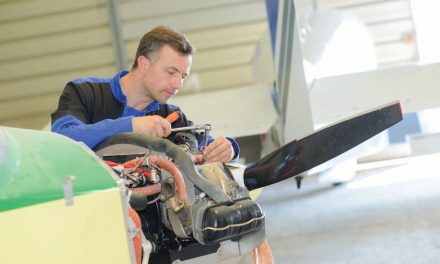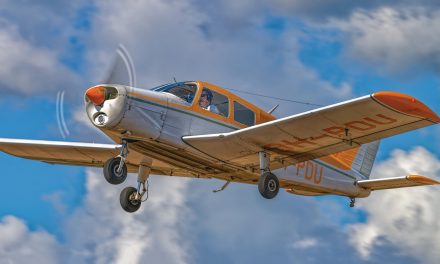Way back when I was in high school — a long time ago, but only yesterday in my mind — I was working on my private license. I started before I was old enough to solo, which gave me a few extra hours. My main trainer was a Cessna 150 at the local flight school FBO. I didn’t get to fly the Cessna 172 because I was still a student, plus I didn’t have enough money for the 172. I think the prices were in the $20 or $30 an hour range, which was quite a bit for a high schooler working part time.
As I was getting close to finishing my training, my older brother, who had already gotten his private license, bought a 1946 Stinson 108. In retrospect, that was an excellent way to learn, and it was a tremendous amount of fun. Starting in a fixed tri-gear aircraft and then transitioning to a tailwheel was a great way to improve my piloting skills.
A tailwheel aircraft makes you work a bit more, but some tailwheels are easier than others. In my opinion, the Stinson would not be considered a difficult tailwheel aircraft compared to my Smith Miniplane, for instance, but it was still a tailwheel. It always seemed to take me by surprise when I was taking off and suddenly found myself drifting sideways or turning unexpectedly with the wind. The Stinson only had brakes on the pilot side, so I think my CFI was always a little reluctant to fly with me in windy conditions. Crosswinds can be a bigger challenge in the Stinson than the Cessna 150, but the concept is the same. Good piloting means using cross controls, maintaining a heading, and controlling the aircraft to the ground.
One thing that was drummed into me in the Stinson was to never stop flying the aircraft. The same thing was said about the Cessna 150, but it didn’t seem to stick with me as well. It should have. In fact, I remember landing at the international airport in Des Moines, Iowa, for my final check ride. Back then, it wasn’t as big as it is now, but it was still a big airport. I used the flight school’s Cessna 150 for the ride and flew from my hometown to the Des Moines Airport.
There are persistent rumors that the examiners are tough, that they’re sticklers for details, and they’re hard to get along with. Even if you think that’s probably just hype, it motivates you to prepare well for the exam. The examiner I had, though, fit the stereotype. He seemed to like yelling, especially if you made consistent mistakes. In my case, it happened on landing. I was making smooth, greased landings, but I drifted from the center line. First, he just raised his voice and commented about keeping the plane on the center line. Then he had me request a go-around.
It was the same thing the next time. I made a great landing. It was as smooth as silk, but not on the center line. This time he didn’t just raise his voice. He hurled a few expletives and yelled at me to go around and keep it on the center line or I was going to fail. As you can guess, I did keep it on the center line, although I made a really rough landing. But he was satisfied, said I did great, and told me to taxi back to the office for my temporary certificate. I remember that when I got back to the flight school, I told them I was ready to get checked out in the Cessna 172, since I was now a private pilot! I think I heard someone snickering, but I’m not sure. It was long time ago.
Veering Off the Runway
You’re probably wondering where I’m going with this. Well, I’ve been studying preliminary accident reports and trying to keep track of the different kinds of losses. There are the regular — almost daily — gear ups, gear collapses, and engine failures. There are also a lot of bird strikes. And kind of surprising to me is that there is a regular — again, almost daily — report of aircraft that “veered off runway.” And after veering off the runway, the plane typically runs into a ditch, runway light, pole, tree, etc. Suddenly it appears that pilots are unable to keep the aircraft on the runway.
Then I started looking at a few of the recent claims in my book of aviation insurance business. There was a tailwheel aircraft that veered off the runway, hit sand, and cartwheeled. Then there was a Malibu that veered off the runway, collapsed the right gear, and ground looped, as well as a Cherokee that veered off the runway and ran into a ditch. That’s just a few of them.
At first, I thought these might be training flights. Then I started thinking maybe it’s because of crosswinds. There doesn’t seem to be a consistent reason, although I have to believe the underlying cause is crosswinds, but I couldn’t tell that from the preliminary safety reports. Interestingly, one day’s report had three Cessna 172s veering off the runway as the reason for the accident.
WHAT IS A RUNWAY EXCURSION?
In my study of preliminary accident reports, I was amazed at how many general aviation aircraft were reported to have veered off the runway. This would be what the FAA and ICAO term a runway excursion. The FAA says a runway excursion (RE) is “a veer off or overrun from the runway surface (ICAO).”
My search went back several years and ended at May 2022. There were more than 3,600 reports that included the key word “veered.” But I also discovered that there were other terms used occasionally — such as “left the runway,” “drifted,” and more — that could increase that number.
I was unable to find any studies that covered this issue directly, and I don’t have any exact numbers, but I did my own unscientific review. Over a 10-day period, there were 89 reported events. During that time, there were 22 events in which an aircraft veered off or left the runway. That’s almost 25% of the accidents, so it’s probably more common than you realized.
The Impact on Insurance
What does all this have to do with insurance? These types of accidents are not always cheap repairs. With increased aircraft values and the increased prices of used and replacement parts, the cost of even “minor” damage is no longer minor. The Malibu was a total loss. I was told that the wing is built in one piece — like the old P-51 aircraft — and the cost would be close to $450,000 to replace just the wing. That was what the entire airplane was insured for. A prop strike on a runway light will cost from $10,000 to way over $40,000, depending on the resulting inspection and damage.
Will the insurance company cover this type of accident? If you have ground and flight coverage, and you’ve met all the requirements for the policy coverage (such as training), they should. But your insurance rates could be affected. Even if the accident isn’t your fault, such as if a mishap was caused by brake failure, a damaged tailwheel, etc., you’ll probably see a rate increase at renewal. Additionally, that incident will follow you for three to five years. Most companies will not take on new business if you have had any kind of accident, incident, or suspension in the last five years. That means you’ll need to stay with your current insurance company for the next five years. If you’re over 70, you’ll have fewer options.
If your aircraft is totaled and you don’t replace it right away, or the insurance company you have won’t insure you in the new aircraft, neither will the other aviation insurance companies. Working with your insurance broker to keep you insured after a loss is very important, and it’s more important the older you are.
Additionally, the more losses that a class of aircraft or a specific make and model experience, the more likely it is to see raised rates across the board. I also wouldn’t be surprised if there is actuarial data that could put numbers to these accidents and correlate them to factors such as a pilot’s age, type of ratings, number of hours, etc.
The increase could also end up with underwriters increasing the initial training requirements or adding annual training to what we consider a simple aircraft. In the end, all of this could result in the potential for higher premiums for other aircraft insurance customers.
What Should You Do?
Do you remember the old training advice that says, “Fly the aircraft first”? During tailwheel training, the instructor would try to drum into me that I should remember to fly the aircraft all the way until it is tied down. Looking at the increase in accidents caused by veering off the runway, it appears that pilots are relaxing on landings and not concentrating on the control of the aircraft. Maybe there should be a refresher on this for all pilots.
I understand that you don’t always land on the centerline. I know when you fly into AirVenture, you won’t land conventionally. But the idea is to maintain control of the aircraft. All the yelling from my examiner during my check ride was to remind me to keep the aircraft on the runway, to not relax, and to not stop flying the airplane until it’s tied down.

